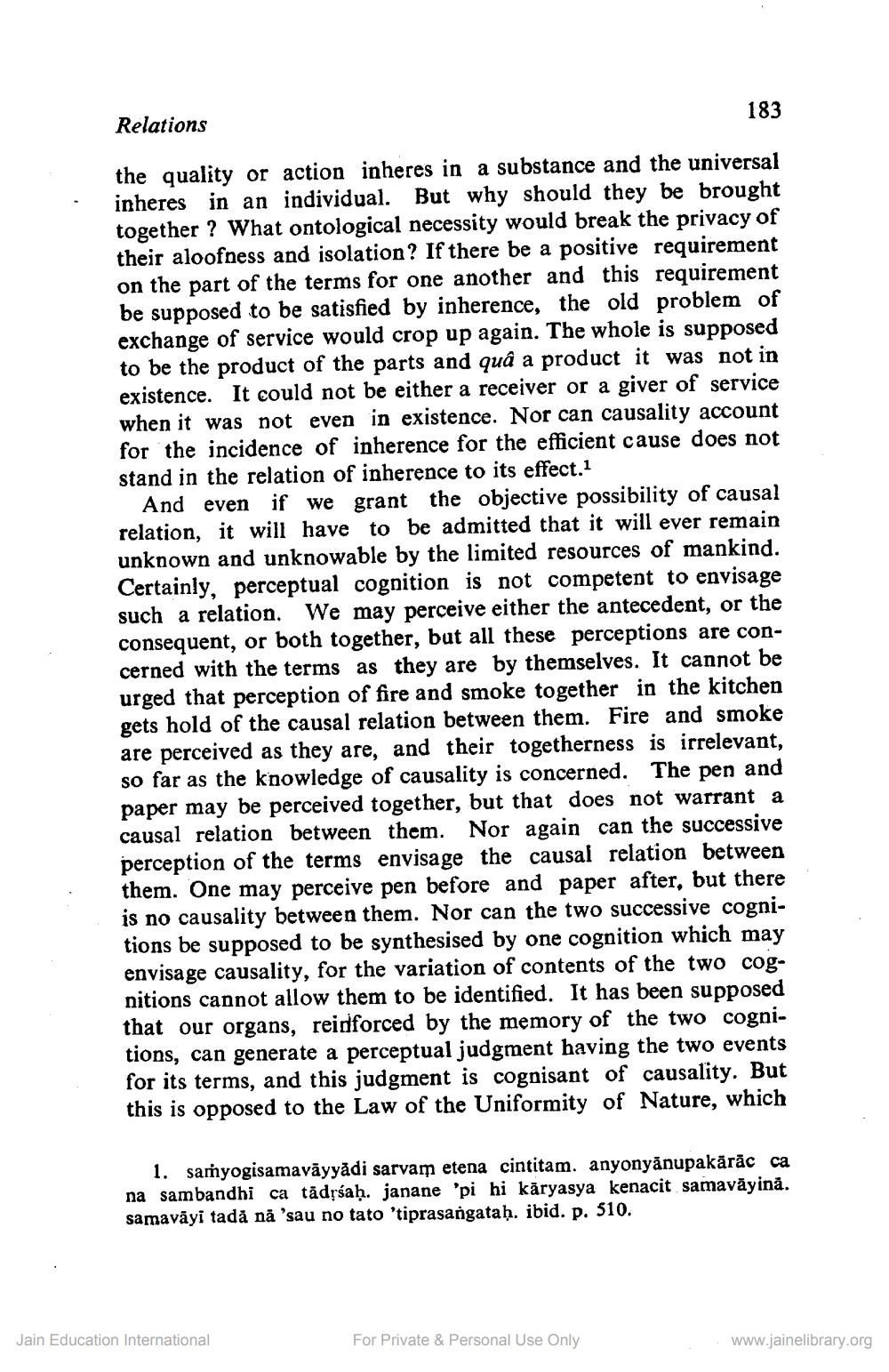________________
Relations
183
the quality or action inheres in a substance and the universal inheres in an individual. But why should they be brought together ? What ontological necessity would break the privacy of their aloofness and isolation? If there be a positive requirement on the part of the terms for one another and this requirement be supposed to be satisfied by inherence, the old problem of exchange of service would crop up again. The whole is supposed to be the product of the parts and quâ a product it was not in existence. It could not be either a receiver or a giver of service when it was not even in existence. Nor can causality account for the incidence of inherence for the efficient cause does not stand in the relation of inherence to its effect.1
And even if we grant the objective possibility of causal relation, it will have to be admitted that it will ever remain unknown and unknowable by the limited resources of mankind. Certainly, perceptual cognition is not competent to envisage such a relation. We may perceive either the antecedent, or the consequent, or both together, but all these perceptions are concerned with the terms as they are by themselves. It cannot be urged that perception of fire and smoke together in the kitchen gets hold of the causal relation between them. Fire and smoke are perceived as they are, and their togetherness is irrelevant, so far as the knowledge of causality is concerned. The pen and paper may be perceived together, but that does not warrant a causal relation between them. Nor again can the successive perception of the terms envisage the causal relation between them. One may perceive pen before and paper after, but there is no causality between them. Nor can the two successive cognitions be supposed to be synthesised by one cognition which may envisage causality, for the variation of contents of the two cog. nitions cannot allow them to be identified. It has been supposed that our organs, reidforced by the memory of the two cognitions, can generate a perceptual judgment having the two events for its terms, and this judgment is cognisant of causality. But this is opposed to the Law of the Uniformity of Nature, which
1. saryogisamavāyyādi sarvam etena cintitam. anyonyānupakärāc ca na sambandhi ca tādrśaḥ. janane 'pi hi kāryasya kenacit samavāyină. samavāyi tadă nā 'sau no tato 'tiprasangataḥ. ibid. p. 510.
Jain Education International
For Private & Personal Use Only
www.jainelibrary.org




